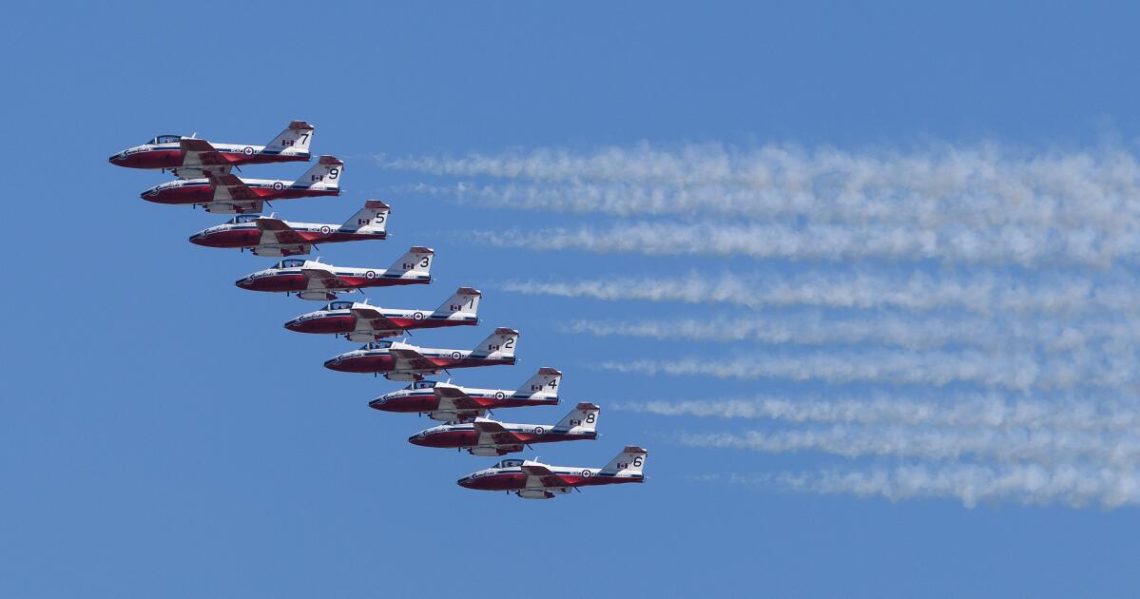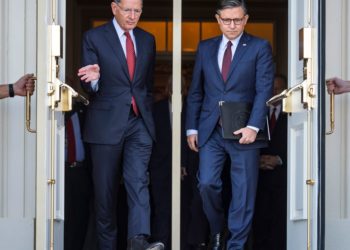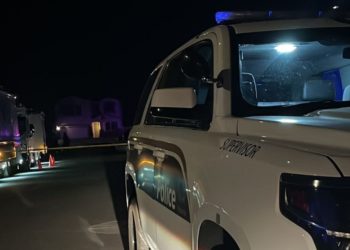Right above the shores of Huntington Beach, a retired American subsonic T-33 fighter jet darted across the blue canvas of a clear afternoon sky, leaving a spiraling plume of smoke in its wake.
The aeronautical scene is a familiar sight in the coastal city this time of year. The Pacific Airshow, an annual three-day civilian and military aerobatic display that touts advanced maneuvers and aerial military might, has drawn thousands of aviation enthusiasts to Huntington Beach and the Australian Gold Coast since its inception in 2016.
Janet Cardena, who has attended every Pacific Airshow, said experiencing the raw physical power of the planes keeps her coming back.
“I’m down by the water and I feel the jets while they do their flyover, and the rumble — your body shakes like a building when there’s an earthquake,” Cardena said. “Then the smell of the gas. …It’s amazing for me.”
However, this year, there was a notable force of nature and technology missing from the spectacle.
Due to the congressional deadlock over the budget and subsequent federal shutdown, the U.S. military — perhaps the most prominent Pacific Airshow draw — would not be in attendance over the October 3-5 weekend.
“We have been advised that U.S. military assets will not be able to participate in this year’s event,” Airshow Director Kevin Elliott said in a statement. “While this is certainly disappointing news, we are excited to share that Pacific Airshow Huntington Beach will continue as scheduled.”
To some, the sky might as well have fallen.
“When we’re trying to bring our kids out here to have fun, and I’m like, ‘well, sorry, no Marine Corps planes,’ it’s pretty disappointing,” said Ryan, a former Marine who chose not to share his last name out of privacy concerns. “I was in the invasion of Iraq, and so we had a lot of fixed wings coming over, dropping bombs, so I tend to get kind of emotional.”
The Pacific Airshow has had its fair share of hitches before — many outside of organizer’s control. Last year, viewers were subject to a thick marine layer that clouded the skies and nearly obstructed the view of the few planes that still went up. In 2021, an oil spill off the coast of Huntington Beach forced a cancellation of the last day of the weekend.
This year, the show went on, though without what many believe is the main attraction. There was still a beachful of attendees, staring at the sky in anxious anticipation of the intestine-rattling blast of plane engines from not-so-far above.
The British Royal Air Force and Canadian Armed Forces acted as substitutes for the U.S. Air Force, some members of which strolled around the event uniformed and at booths hosting pull-up challenges and recruitment efforts near the food vendors.
“That’s one thing I do miss, is the scene where the F-35s and the Thunderbirds play,” said Janet Kondos, an Air Force veteran. “It is what it is, they got to do what they have to do.”
Royal Air Force paratroopers drew a grand applause after a coordinated display of parachute work that saw them float down to the shores. After a Red Bull aerobatic helicopter improbably flipped over its rotor and pulled itself out of a dive at the last second, a group of children near the shore started imitating the maneuver in somersaults.
Emma McDonald, an Australian pilot who flew a petite Extra 300L aerobatics plane, darted directly into the sky at a near-90-degree angle about midway through the program, which caused the audience to hold their collective breath as the aircraft plateaued. McDonald yanked the plane from an upright position and tumbled over into a glide, drawing gasps that transformed into cheers.
“That’s it!” one attendee shouted. “Keep it up!”
Although there was little American military spirit in the sky, the patriotic spirit on the ground was indelible, reminiscent of a Fourth of July celebration. Children ran and played in the water, couples with full beach setups caught a slight buzz in the sweltering heat and American flags decorated the sands like a planet conquered.
“We did the Miramar Air Show before and they had a whole Marine Corps infantry display where they get off the helicopters and then they do the whole attack,” Ryan said. “It would be pretty cool with our equipment here, as opposed to the Royal Air Force.”
Despite not having the most current U.S. fleets, crowds were still privy to a history lesson in American aviationthroughout the program. A World War II B-29 Superfortress, a B-25 Mitchell bomber and Vietnam-era Grumman Albatross all made impressionable appearances.
To some, the opportunity to be so close to some of the crowning achievements in aeronautics was personal.
“Out of all the dreams that I had as a kid, that’s the one thing I wanted to do, like I want to fly an Apache, I wanted to fly a jet,” said Cardena. “But growing up, there weren’t women that were pilots and so this is as good as it gets for me — this is as close as I can get to them.”
Cardena still found herself slightly disappointed with the consequences of a federal shutdown. She had looked forward to seeing the planes and helicopters she grew up wishing she could fly, but unfortunately, it was not her year.
As Cardena reflected, a Royal Air Force C-17 temporarily blotted out the sun and covered the beachgoers with a gargantuan shadow as it passed over Huntington.
The post The show must go on: Pacific Airshow attendees grieve over absent U.S. aircraft amid government shutdown appeared first on Los Angeles Times.




